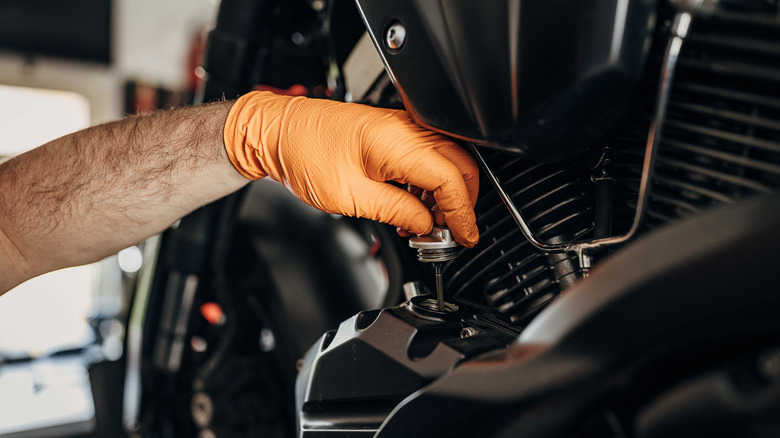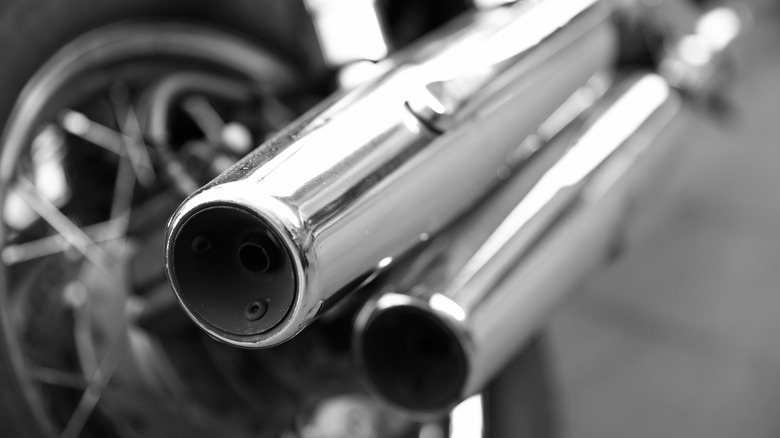Winterizing Your Motorcycle: Essential Tips For Cold Weather Storage
When the snow starts falling and the temperature starts dropping, it means that motorcycle-riding season is officially over. It's tragic, but you'll have to put your two-wheeled friend away until things start warming up again. However, doing this is not as simple as sticking your motorcycle in the garage and wishing it well, or even worse, leaving it outside without any kind of protective covering.
Intense cold is a natural enemy of precision machinery like motorcycles. If you just leave your motorcycle hanging for the winter without properly preparing it, you could find it damaged and diminished when you return to it in the spring. To ensure this doesn't happen, you need to take the proper steps to winterize your motorcycle, ensuring it can withstand the cold weather in storage and be ready to ride again when things thaw out. This includes utilizing the right equipment, finding the right storage spots, and checking off a few chores.
Thoroughly clean your motorcycle
The first thing you need to do to prepare for the cold season is give your motorcycle a thorough cleaning. Residual contaminants like dust, dirt, and, most importantly, wastewater can cause your motorcycle to rust while it's sitting in the cold. To prevent this, you should give your ride a full cleaning routine, including a complete wash, thorough drying, wax on the metal parts, and treatments on any leather bits. Not only will this remove any loose gross bits, but it'll help to seal in the bike's freshness while you're not using it, which means you won't need to clean it again in the spring.
While cleaning your motorcycle, you should take a moment to inspect some of its moving parts. Check the tires for uneven wear and low air, lubricate the chain drive if you have one, or if you have a belt drive, then just give it a thorough look-over. You want this bike to be picture-perfect before you put it away.
Change the oil, fill the fuel
If you haven't changed the oil on your bike in a while, it's vital that you do it before putting it away for the winter. When left in the cold, old fluids can start to congeal and solidify within your bike, leading to engine problems when you try to start it up. Get some fresh oil and other vital fluids like coolant and brake fluid into your bike to keep it fresh and free of loose sediment while it's in storage.
While adding fuel to a vehicle you aren't planning on using for a while may seem paradoxical, you should also top off your bike's gas tank. That's not all, though; in addition to the fuel, you should also add a measured amount of fuel stabilizer to the tank. If you only add new gas, it might separate and degrade in the tank. Adding fuel stabilizer to fresh gas prevents this chemical reaction, keeping it nice and fresh. If you can, try to add the stabilizer right after you fuel up at a gas station so you can run some of it through the carburetor as you drive home.
Stuff the exhaust pipe
In normal circumstances, it would be extremely inadvisable to stuff any foreign object into your motorcycle's tailpipe, as any blockage can lead to a severe engine blowback. However, the lone exception to that is in the winter. If you leave your bike out with its pipes exposed, small critters like mice and rats will crawl in and make their homes in your engine to escape the cold themselves. The problems with this are pretty obvious, so let's ensure it doesn't happen.
To keep critters out of your tailpipe, stuff a sandwich baggie with steel wool, then firmly wedge that baggie into the pipe. The weight of the steel wool will ensure that small critters can't pull it out, while the baggie ensures that no errant shavings from the steel wool fall into the tailpipe. Just make sure you remember to remove that baggie when spring comes around; leave a reminder somewhere on the bike that you'll see if you don't trust your memory.
Hook up a battery tender
Another aspect of motor vehicles that doesn't mesh well with the cold season is the battery. Your motorcycle's battery contains liquid chemicals that hold and distribute its electrical charge; if it gets too cold, those chemicals will solidify, and the battery will start leaking electricity, eventually draining out completely and becoming unusable. To prevent this, you'll want to employ a specialized piece of equipment called a battery tender.
A battery tender, also known as a trickle charger or a battery maintainer, is a device that monitors your bike battery's charge level and delivers carefully measured jolts to keep it active and juiced. Clean your bike battery's electrodes, then hook up a battery tender to keep the battery topped up while you're not riding. Make sure you get a good tender, as a cheap trickle charger may deliver too much or not enough power throughout the winter.
Find a good storage spot
Once your bike has been sufficiently prepped, it's time for the most important step: finding a good spot to store it. The best possible option here is, of course, a garage. Specifically, you want to store your motorcycle in a garage that's both temperature-controlled and ventilated. A warm, ventilated garage keeps condensation from forming on and, more importantly, within your bike, ensuring it won't endure errant corrosion or freezing.
If you don't have a garage or your garage isn't temperature controlled, the next best option is to wrap your motorcycle in a professional-grade cover that will repel dust, dirt, and pests while still allowing it to breathe. If you have to store it outside, set it up under some kind of cover like a sturdy awning or a D.I.Y. storage tent. If possible, try to move the bike off of the ground, placing it on sturdy crates or struts.





